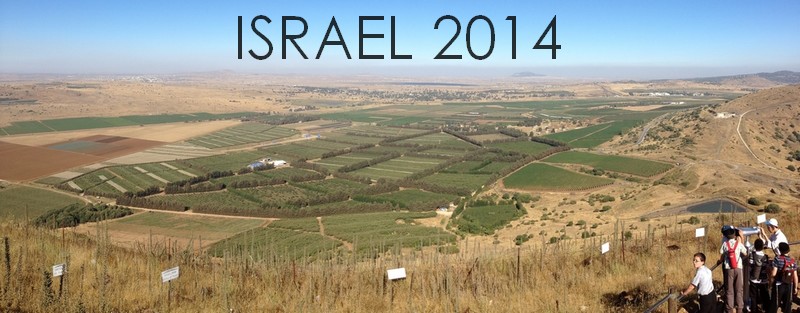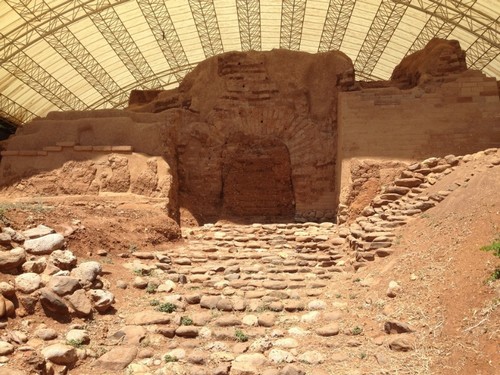
Today we traveled north of the Sea of Galilee. Our first stop was Hazor, the largest city in ancient Israel. We spent some time studying Joshua‘s conquest there to help us get a handle on the major cities and routes of the area. Unfortunately, the geography is still a little fuzzy for me…I’m probably going to have to spend some quality time with my maps before Friday’s test!


Then we went to Tel Dan. Our arrival at Dan was somewhat of a culmination – over the last two and a half weeks, we’ve traveled along the full extent of the Patriarchal Highway! Here, we looked at a 3,800 year old Canaanite city gate before moving on to the Israelite city. We hiked alongside the Spring of Dan, the largest spring in the Middle East and one of the headwaters of the Jordan River. When we arrived at the outer gate of the, our instructor led a talk over the subject of judging and Israelite law. I found this discussion to be particularly revelatory, as it helped me achieve a better understanding of the social structure and justice system of ancient Israel.

Our next stop was Cesarea Philippi, where Peter made his confession that Jesus is the Son of God. Our lecture took place at the mouth of a cave that used to be the source of the Spring of Banias, another headwater of the Jordan River (the spring is still there, but it no longer runs through the cave like it did in Jesus’ time). Our instructor explained that from early on, the cave was a cultic site dedicated to worshipping the Greek god Pan. Later on under Roman rule, it was associated with Hades. Our instructor suggested that maybe it wasn’t a coincidence that Jesus chose to speak of the ‘gates of Hades’ here! Once again, our study of the land was revealing something new about the Scriptures.


Our last stop was Mt. Bental, which gave us a great view of Mt. Hermon and the farthest we could travel towards Damascus before entering Syria.

There on the border, our instructor turned to Isaiah 19:23-25:
In that day there will be a highway from Egypt to Assyria. The Assyrians will go to Egypt and the Egyptians to Assyria. The Egyptians and Assyrians will worship together. In that day Israel will be the third, along with Egypt and Assyria, a blessing on the earth. The Lord Almighty will bless them, saying, “Blessed be Egypt my people, Assyria my handiwork, and Israel my inheritance.”
This is yet another example of a scripture that has been brought to life for me during our time in Israel. While it’s certainly possible to understand this passage without ever coming here, the promise becomes palpable when you have firsthand experience. It may no longer be the empires of Egypt and Assyria putting the squeeze on Israel, but it doesn’t seem like too much of a stretch when you have to look beyond a large security fence to see the other side of the valley. I am praying for the day we see these words come true.